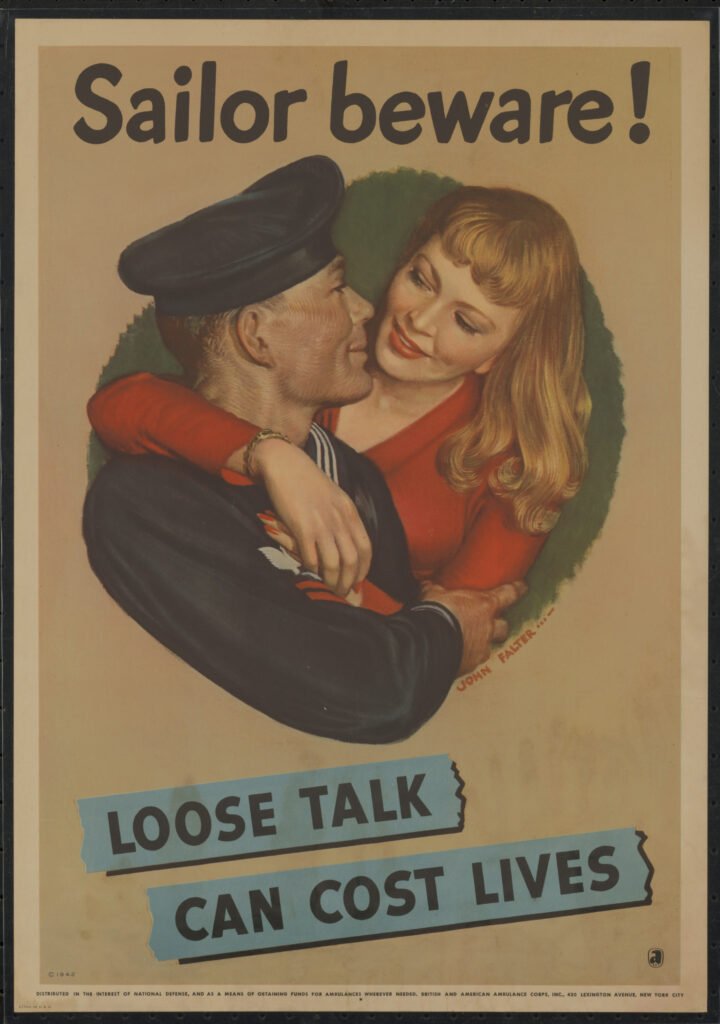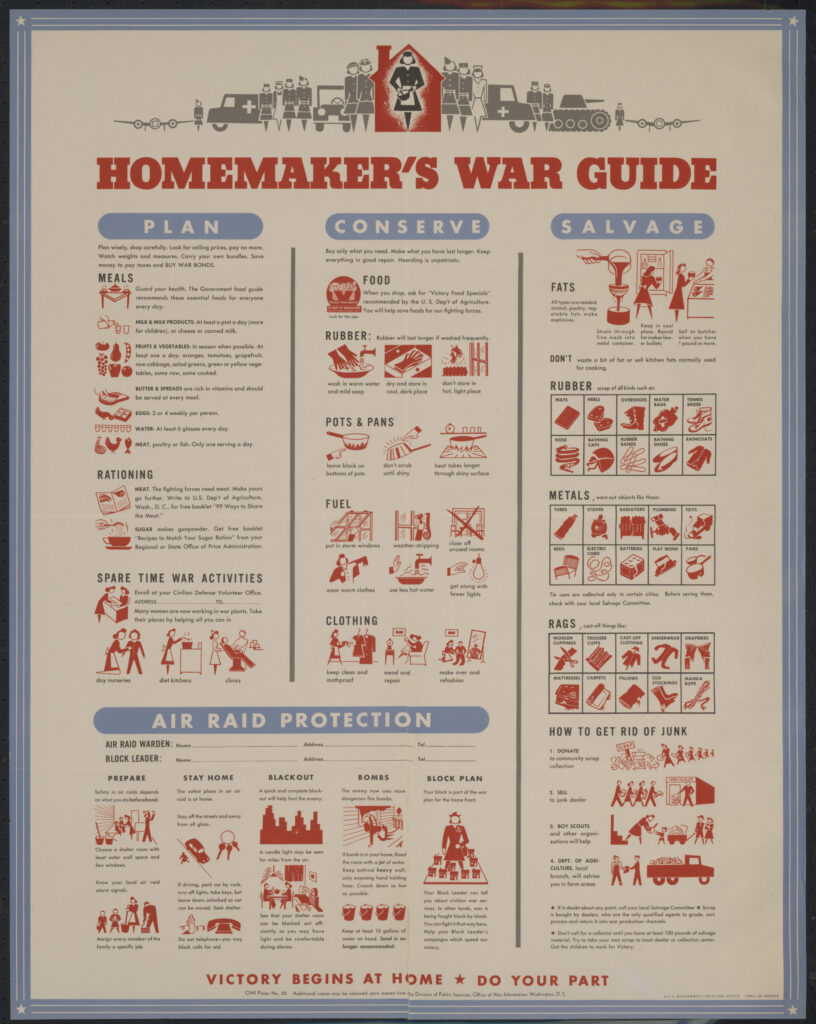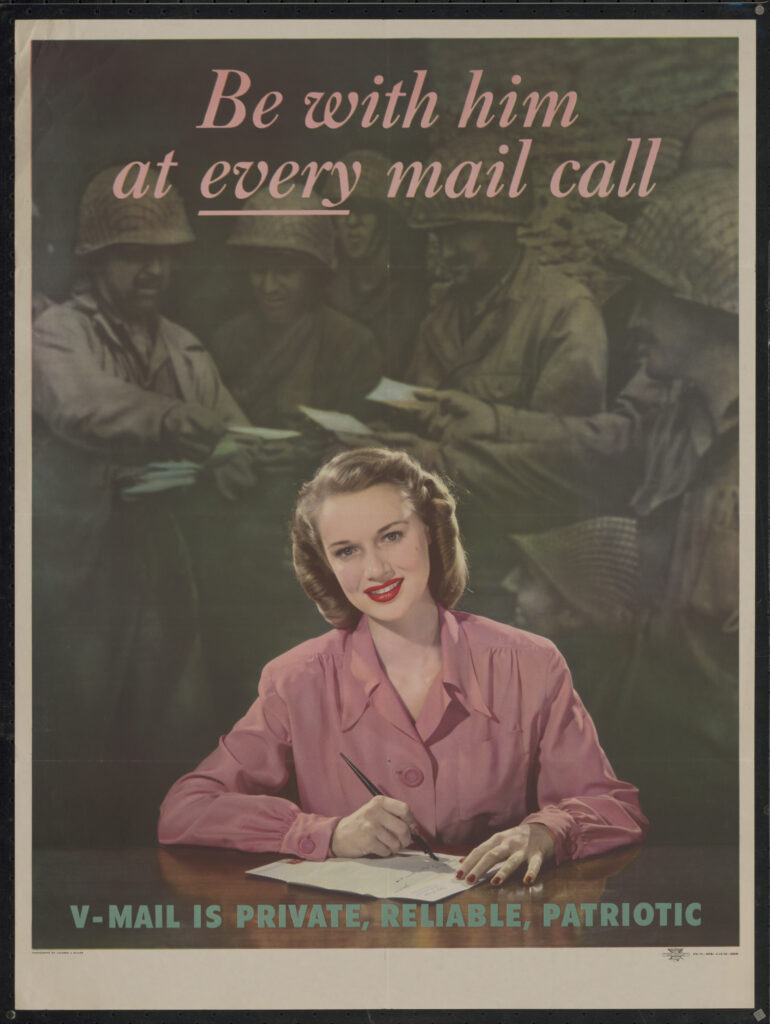Working Women
Like in World War I, women filled the jobs left by men going to war. They took government, newspaper, radio, orchestra, and stock exchange jobs1, as well as industrial jobs.2
Even though there was a familiar fear of having to sacrifice femininity to work, posters attempted to convince women otherwise. Many were even excited to work from a patriotic standpoint. America started to understand that women could work and still have family values.1
Audience and Aftermath
It is important to note that posters targeted middle-class young women (who would have husbands and young children). However, the women who were more likely to work were working-class wives, divorcées, and students.3 Some young women worked, which meant that large daycare facilities were needed for their children. This lead to its own crisis on the home front.
The U.S. government planned for working women to be a temporary concept. They expected that women would return to the home after the war ended and the men went back to their old jobs.3
Careless Talk

This poster shares a competing portrayal of women. Instead of an empowering message, it shows women as threatening.
At the homefront, there was a great deal of paranoia that war information/plans would be leaked to the Axis Powers and the Allies would lose the war. The government issued Careless (or Loose) Talk posters to warn against leaking information.
The poster tells the male viewer that no one can be trusted, not even their wives. It depicts the woman as a temptress, trying to get information out of the sailor. The soldier stares lovingly at the woman, whose lips are parted and neckline dips below sight. She is illustrated as sexually desirable, but the Loose Talk caption twists this into her seducing the sailor.
As a side note, the woman and man together wear red, white, and blue. The viewer may interpret this as a symbol of patriotism that the viewer consumes without necessarily knowing.
Citation: John Philip Falter, British and American Ambulance Corps, “Sailor Beware!”, 1942, GettDigital: World War II Poster Collection, Special Collections / Musselman Library, Gettysburg College, Gettysburg, Pennsylvania, July 20, 2022, https://gettysburg.contentdm.oclc.org/digital/collection/p126301coll3/id/339/rec/5
Traditional Duties

The Homemaker
Click on the poster on the right to open in a new tab and zoom in!
This poster is a how-to guide for women. It instructs them on how to plan, conserve, salvage, and protect themselves and their home from air raids. It is meant to be informative, not necessarily emotional. Women can be patriotic from their own homes by following the directions on this poster.
Citation: Office of War Information, Government Printing Office, “Homemaker’s War Guide”, 1942, GettDigital: World War II Poster Collection, Special Collections / Musselman Library, Gettysburg College, Gettysburg, Pennsylvania, July 20, 2022, https://gettysburg.contentdm.oclc.org/digital/collection/p126301coll3/id/412/rec/2

The Wife
This poster is directed toward women. The call to action is from a woman and addresses the female viewer. The text at the top is pink and the woman is dressed in pink, a traditionally feminine color.
Women are told they can show their patriotism by supporting their men! The poster implies that the value of a woman is tied to her man.
Citation: Lejaren a Hiller, U.S. Army Recruiting Publications Bureau, “Be with him at every mail call”, 1945, GettDigital: World War II Poster Collection, Special Collections / Musselman Library, Gettysburg College, Gettysburg, Pennsylvania, July 20, 2022, https://gettysburg.contentdm.oclc.org/digital/collection/p126301coll3/id/365/rec/22
- Winkler, Allan M.. Home Front U. S. A. : America During World War II, John Wiley & Sons, Incorporated, 2012. ProQuest Ebook Central, https://ebookcentral.proquest.com/lib/gettysburg/detail.action?docID=1765088. [↩] [↩]
- Welch, David. World War II Propaganda Analyzing the Art of Persuasion during Wartime. ABC-CLIO, 2017. [↩]
- Honey, Maureen. Creating Rosie the Riveter: Class, Gender, and Propaganda during World War II. The University of Massachusetts Press, 1984. [↩] [↩]